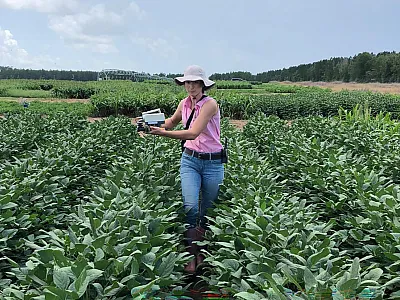Safeguarding Plant Genetic Resources in the U.S.
Climate Change Brings Challenges to USDA National Plant Germplasm System
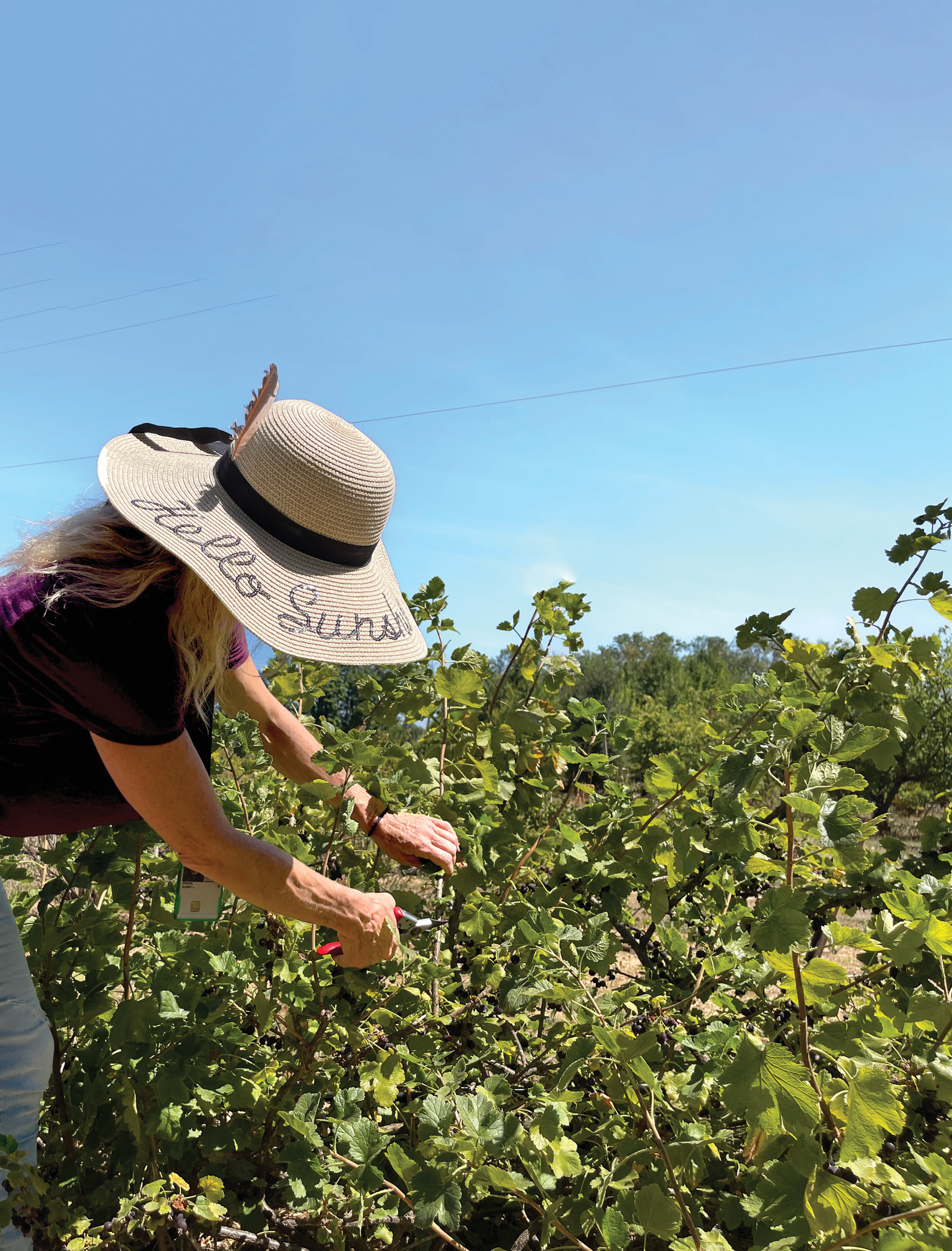
Plant genetic resources comprise the organs and tissues by which plants can be propagated. They provide the raw genetic materials that are instrumental for continued genetic gain through crop breeding that is crucial to food security.
Rapid climate change brings with it many challenges, including challenges in conserving plant genetic resources located at U.S. plant genebanks around the country.
An article in Crop Science examines forecasts of future climatic conditions and the effects on the suitability of USDA genebank locations to continue to host their current array of plant genetic resources.
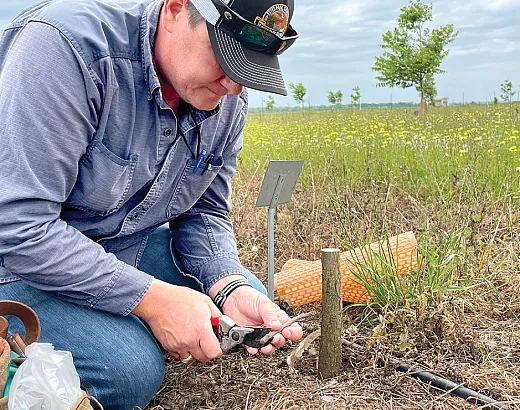
Plant genetic resources comprise the organs and tissues by which plants can be propagated. They provide the raw genetic materials that are instrumental for continued genetic gain through crop breeding that is crucial to food security.
Rapid climate change brings with it many challenges, including challenges in conserving plant genetic resources located at U.S. plant genebanks around the country.
An article in Crop Science examines forecasts of future climatic conditions and the effects on the suitability of USDA genebank locations to continue to host their current array of plant genetic resources.
“The era of global boiling has arrived,” says United Nations Secretary‐General António Guterres, prompted by climate scientists finding that July 2023 was the hottest month on record globally.
Rapid climate change brings with it many challenges that are well documented, but the challenges it raises for the nation’s agricultural genebanks haven’t gotten much publicity until recently. Consider these challenges in conserving plant genetic resources located at U.S. plant genebanks around the country: Drastically reduced yields of pulse crop germplasm such as peas, chickpeas, and lentils in the Pacific Northwest due to a “heat dome” in 2021. Sharply reduced success of pollination of corn germplasm in Iowa. Inadequate winter chilling leading to difficulties with managing fruit crop genetic resources in California. Pecan germplasm in Texas susceptible to increased disease risk in association with higher temperatures and drought. Increased susceptibility to fire blight in apple germplasm in New York. Coffee genetic resources threatened by diseases brought on by increased heat and rainfall in Hawaii.
These are just some of the current threats to strategic plant genetic resources (synonymous with plant “germplasm”—the organs and tissues, i.e., seeds, fruits, cuttings, pollen, and tissue cultures—by which plants can be propagated) in USDA’s National Plant Germplasm System (NPGS) from climate change. They are described in a recent article in Crop Science (https://doi.org/10.1002/csc2.21003), part of a cross‐disciplinary virtual issue (https://bit.ly/climate‐change‐issue) across ASA, CSSA, and SSSA journals documenting progress in understanding the impact of climate change on agricultural systems.
The Crop Science article examines forecasts of future climatic conditions and the effects on the suitability of USDA genebank locations to continue to host their current array of plant genetic resources. The research team developed the Climate Futures app (https://geocentroid.shinyapps.io/npgsclimatefutures/) to integrate and visualize past U.S. temperature and precipitation data with estimates of the future effects of climate change provided by four climate projection scenarios from the Intergovernmental Panel on Climate Change. The four scenarios represent low, intermediate, high, and very high future greenhouse gas emissions for the rest of the century with a focus on estimating conditions specifically for the 20 NPGS genebank sites.
Peter Bretting, Crop Production and Protection National Program Leader, USDA‐ARS, Beltsville, MD, and the study’s corresponding author, finds the effects of rapid climate change on genebank operations under the most extreme climate scenario to be “a wake‐up call.” The predicted average future temperature is almost 10 degrees warmer than now. “The forecasts under the extreme scenarios are really dire,” says Bretting, a CSSA member. “It would certainly change our genebank operations quite substantially.”
Origins and Value of National Plant Germplasm System Collections

“The value to humanity of successful long‐term maintenance of a wide spectrum of [plant] genetic diversity should be publicized,” Bretting wrote in a 2018 paper. He cited the example of a peanut sample (also termed an “accession”) from the NPGS collection that was used to breed resistance to tomato spotted wilt virus into numerous commercial peanut varieties. By 2001, the economic value of that resistance trait was estimated at US$200 million per year. This is about four times the NPGS’s entire annual budget in 2022.
“Germplasm is the basis for sustainability, for delivering a new cultivar to our producers,” says James McFerson, chair of USDA’s National Genetic Resources Advisory Council, “so they can remain profitable and sustainable, and our citizens have access to nutritious, high quality food while protecting the environment.”
Agricultural scientists in the United States started amassing germplasm about 100 years ago, but more formal conservation operations began after World War II, to help protect threatened crops and plant genetic resources against emerging pathogens and pests. Only in the 1970s did the genebanks around the country begin to operate as a coordinated network. The NPGS currently safeguards more than 605,000 accessions of plant genetic resources representing more than 16,300 plant species.
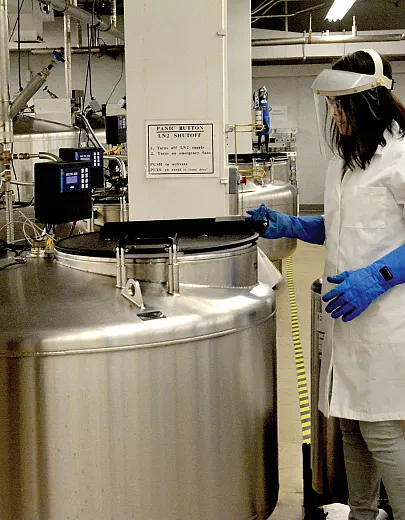
About 10 years ago, the focus at NPGS expanded to begin to address the effects of rapid climate change and the challenges it will bring in delivering plants that can grow in more extreme weather or have resistance to new pathogens or pests. Climate change hasn’t changed the mission of the NPGS but has accentuated its importance.
In 2018, Congress in the farm bill gave the NPGS the task of developing a plan to address the backlog in maintenance and characterization of genebank accessions. Congress is currently working on the next farm bill, and the NPGS is finalizing the plan requested by Congress. The recent article in Crop Science will contribute to the NPGS’s plans for adapting genebank operations to handle future challenges, including the impact of climate change.
The Challenge of Plant Germplasm Maintenance and Regeneration
The great diversity of agricultural genetic resources is an asset in potentially adapting crops to climate change; it’s also a challenge when it comes to operating a systematic plant genetic resources maintenance program due to the unique nature and needs of each crop.
Genebanks must periodically regenerate seed supplies because they lose their viability over varying lengths of time and in different storage conditions. Seed supplies can also be depleted because they are frequently distributed to researchers trying to breed for a desired trait.
Supplies of some short‐lived seeds, such as lettuce, need to be replenished about every five years, but others could last in storage even 50 to 60 years. Most seeds need to be preserved in a low‐temperature, low‐humidity cold room or freezer. Without proper seed storage for a crop, NPGS staff can get much‐reduced or almost zero germination on grow‐out. Furthermore, they might not currently have the knowledge or technology to place every seed in its ideal storage conditions.

Most crop genetic resources are maintained “ex situ” in those cold rooms, greenhouses, or agricultural fields. Some of the wild relatives of crops, such as for cranberries and chili peppers, are protected “in situ”—out in nature on U.S. Forest Service land. Populations of those crop wild relatives (CWR) are subjected to all the evolutionary forces there, such as pests, pathogens, and temperature and precipitation fluctuations.
Some crops, such as sunflowers and alfalfa, in NPGS genebanks are grown out in insect‐proof cages, which protect the genetic integrity of each accession by excluding other pollinators. These cages can house managed pollinators such as alfalfa leafcutting bees and honeybees, depending on which are most effective for each crop. This increases the amount of seed generated.
Genetic resources of still other plants—including apples, citrus, avocado, and pecans—are clonally propagated—grown from organs or tissues of the parent plant. These are the most labor‐intensive and expensive to safeguard because they are managed in field orchards subject to extreme weather and pests and pathogens year‐round.
Efficiently managing plant genetic resources presents challenges even without climate change. Plant scientists don’t yet know for all CWR whether they are cross‐pollinated or self‐pollinated, what the most effective pollinator is, or how to effectively germinate and best store seeds. There’s also a gap in capacity: NPGS has a limited number of genebank locations, freezers, insect cages, greenhouses, and other field equipment; a finite amount of land; and even less land with irrigation.
Climate Change Adds to NPGS Challenges
The Crop Science article discusses seven case studies of crop genetic resources in the NPGS, including those mentioned above, and cranberry, that face management challenges because of climate change. For example, with the warming climate and increased precipitation at the NPGS genebank in Hawaii, coffee leaf rust now occurs at higher elevations. Coffee accessions may need to be propagated more frequently to conserve them, and so NPGS scientists can identify lines better adapted to warmer temperatures and breed those into the currently narrow genetic base of the cultivated crop. Another possible strategy could be to grow those and other accessions in greenhouses.
Irish points out that pulse crops are important to human nutrition for their protein and nutritional value. Because they are increasingly used as meat substitutes, demand for them is expected to rise as more people switch to low‐meat or vegetarian diets. There are plans to increase the amount of irrigated land at the Pullman, WA, site where pulse accessions are typically grown, but the primary threat during the 2021 heat dome came from heat rather than from lack of water, so it’s unclear how helpful expanded irrigation would be.
Reduced populations of pollinators is another problem that’s expected to increase. If the NPGS pushes planting dates earlier to find more favorable temperatures, they may face damaging frosts and misalignment with pollinators. These interactions require more research.
The answer to an emerging crop threat often comes from CWR in nature. In Wisconsin, NPGS scientists have been monitoring potato CWR annually for about 30 years, so they have extensive data on which populations are adapting better to climate change and resultant changes in pests and pathogens. In commonly grown potato varieties, CWR have already played an important role in breeding for disease resistance.
Increased Costs, But Reasons for Hope
The sheer volume of plant accessions and the variability among crops make managing the national system of genebanks and plant genetic resources complex. “Throwing in this additional challenge of climate change just makes the work that much broader and more difficult to achieve,” Irish says.

As with most issues, adjusting to climate change will cost more: Higher energy bills to keep seeds at a sufficiently cold temperature. Expanded capacity for low‐temperature seed storage and seed quality monitoring methods. Increased costs of maintaining duplicate populations of field‐grown plants in case one location becomes inhospitable to them. The expansion of irrigation systems. Replacement of greenhouses and other field equipment damaged by extreme weather events. Construction of weather stations at genebank sites currently lacking them to refine future climate estimates. The potential need to move plant genetic resource collections or regeneration operations to different sites.
The challenges can seem daunting, but Bretting, Irish, and McFerson remain hopeful about our potential to address these problems. “The good news is we have a world‐class plant germplasm system,” McFerson says. “The multiple sites in our current NPGS system grant resiliency.”
“We’re lucky that there is a tremendous amount of inherent genetic variability in plants,” Bretting says. This has allowed producers to meet many challenges and is a cause for future optimism. Another positive factor is that phenotypic evaluation of plant genetic resources should become more cost‐effective as high‐throughput technologies advance and proliferate like genotyping techniques. The Climate Futures app the team developed will help with estimates of future conditions, and researchers now have much more relevant data than they once did.
The thing that gives NPGS leaders the most hope is the group of young scientists who are joining NPGS genebank staffs. The system is currently seeing the generational turnover in employees that so many organizations are, but NPGS is simultaneously attracting top‐notch curators and other scientists with broad and deep knowledge to manage the resources.
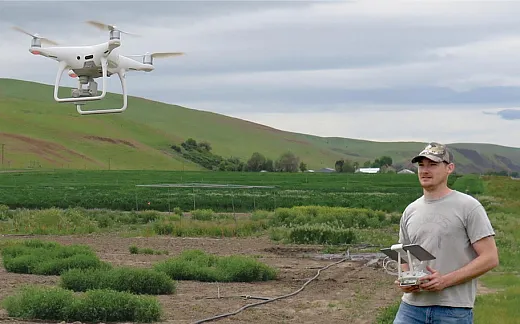
What Now?
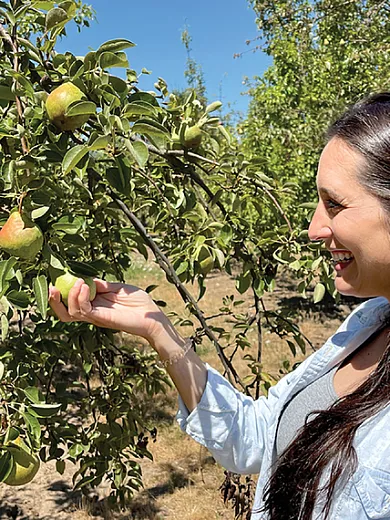
Following its approval, NPGS scientists and staff will begin to implement the plan they developed for the future evolution of the NPGS. This will require continuing cooperation with partners and stakeholders as well as continuing identification of CWR traits conferring recently evolved tolerance to drought, higher temperatures, and disease and pest resistance. Adapting to rapid climate change will likely include the irrigation of more land on which to grow out collections; alternative energy sources for NPGS sites; more and better cold preservation methods; and possibly new sites for NPGS activities, among other changes.
Luckily, agriculture and food security have historically been U.S. governmental priorities, so NPGS leaders hope support for implementing required changes will be forthcoming.
Bretting and others agree that other national genebanks should conduct similar analyses and plan for a future under climate change. They can adapt the Climate Futures app that USDA developed to inform future scenarios.
“The problems that we’re facing safeguarding our plant genetic resources in the U.S. are the same everywhere,” McFerson says, “and even tougher for folks that don’t have the resources allocated to that effort.”
DIG DEEPER
View the latest article in Crop Science:
Volk, G.M., Carver, D., Irish, B.M., Marek, L., Frances, A., Greene, S., … & Bretting, P. K. (2023). Safeguarding plant genetic resources in the United States during global climate change. Crop Science, 63, 2274–2296. https://doi.org/10.1002/csc2.21003
Also of potential interest:
Byrne, P.F., Volk, G.M., Gardner, C., Gore, M.A., Simon, P.W., & Smith, S. (2018). Sustaining the future of plant breeding: the critical role of the USDA‐ARS National Plant Germplasm System. Crop Science, 58, 451–468. https://doi.org/10.2135/cropsci2017.05.0303
Climate Futures app: https://geocentroid.shinyapps.io/npgsclimatefutures/
Text © . The authors. CC BY-NC-ND 4.0. Except where otherwise noted, images are subject to copyright. Any reuse without express permission from the copyright owner is prohibited.







